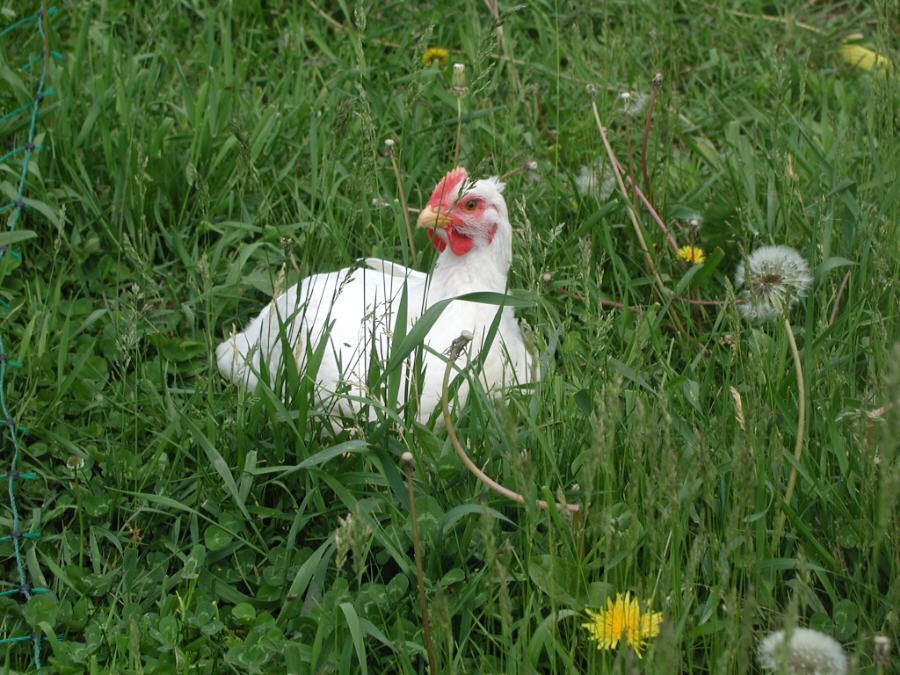
When I said the other day that I love the hot, humid weather and bring it on…
What I meant to say was, bring it on after the chickens have been butchered. Since Friday we’ve had hot, humid days with highs in the 90’s. The kind of hot that makes you think your skin is melting right off your bones. The kind of hot that curls the hairs framing Olivia’s face into graceful little spirals. The kind of hot that is the death of 7-week-old broiler chickens.
For us it’s the trickiest thing about raising these birds on pasture. We don’t have electricity out there, so we can’t put fans on them. We don’t have a hydrant out there, so we can’t mist water on them. But after losing half our flock last year in a heat wave the day before they were to be butchered, I guess we’ve learned a few things. We only lost 4 over 4 days of heat this weekend.
We’ve learned to feed them at daybreak, and then take their feed away mid-morning. Eating just causes them to generate more body heat. Wait until late afternoon to feed them again. Kick them out of their shed. There’s no air movement inside the shed, and the heat exacerbates any ammonia present and damages their lungs. Set up adequate shade, with tarps or by other means. Move them to fresh, long grass. Of course have plenty of water, and position it close to or inside the shade area so that they don’t have to move far to get it.
Just one more week to get through until butchering day.



Nice looking chickens there !!!!! At least you didnt’ have to put in AC for them.LOL
We use maple sap tubing for watering all kinds of livestock. Sap tubing is a blue plastic 1/4 inch tubing that connects to faucets and waterers and itself with little plastic barb fittings. It’s pretty tough stuff and reasonably cheap. Last time I bought it it was $40 for 500 feet. It works very well for livestock that don’t require a high volume of water quickly. I have it connected to several hog nipples, many chicken waterers, etc. It got pretty hot here yesterday so I connected a piece with some holes pricked in it to mist the pigs. Up until a few years ago we watered 20 cows with it but it required a big water tank to store up enough water to compensate for times when the cows drank faster than the sap tube could deliver. It can also be stretched overhead for crossing roads etc. It does freeze quickly in cold weather but it doesn’t damage it. It also makes good electric fence insulators and replacement insulation for pliers. I get my tubing and fittings from Randy Loch. Their web address is http://www.lochsmaple.com. Maybe this stuff could be of some use to you.